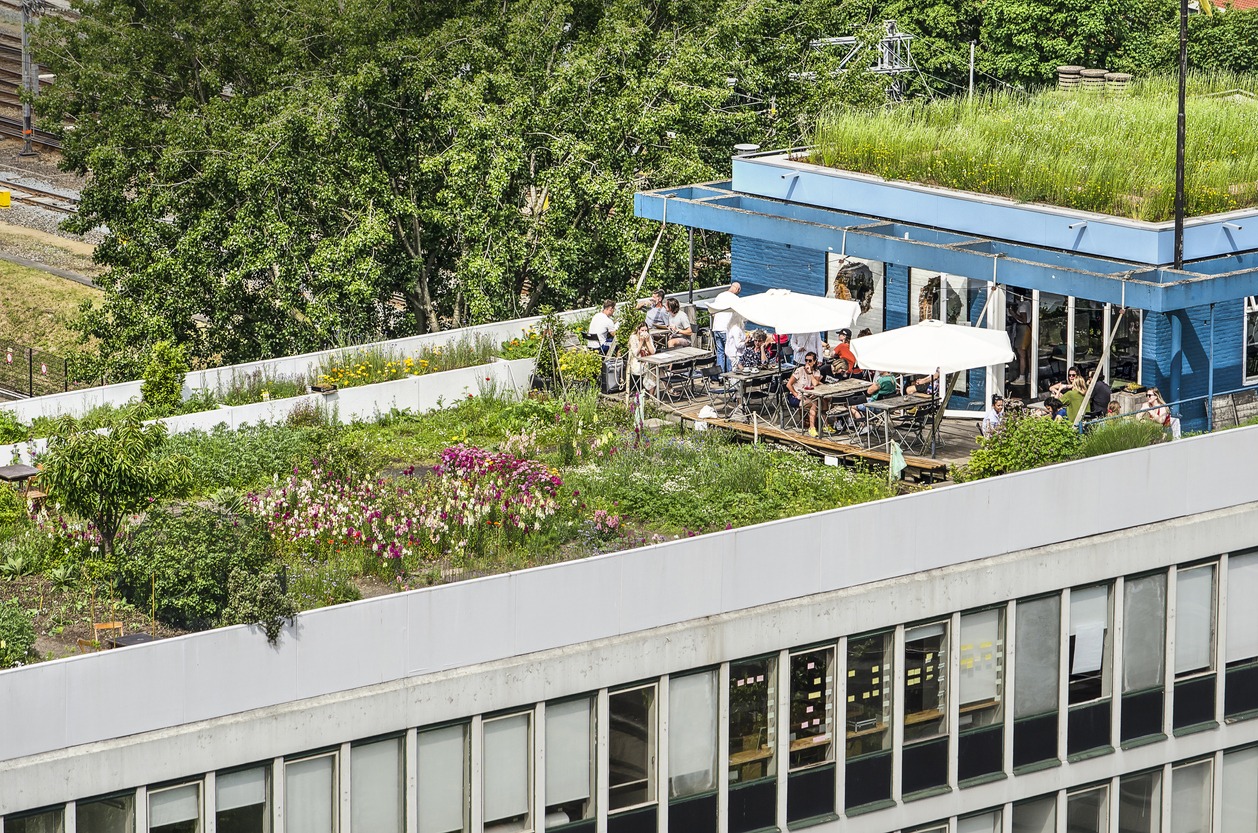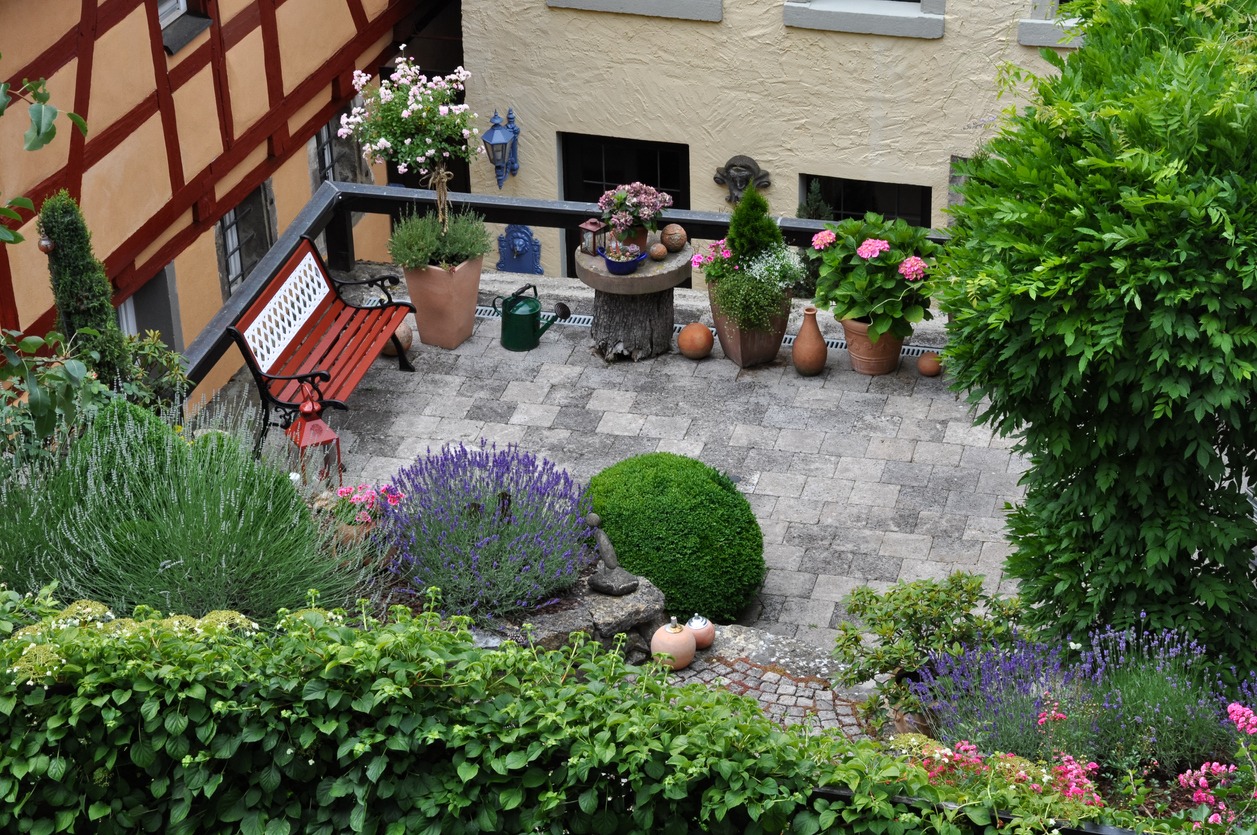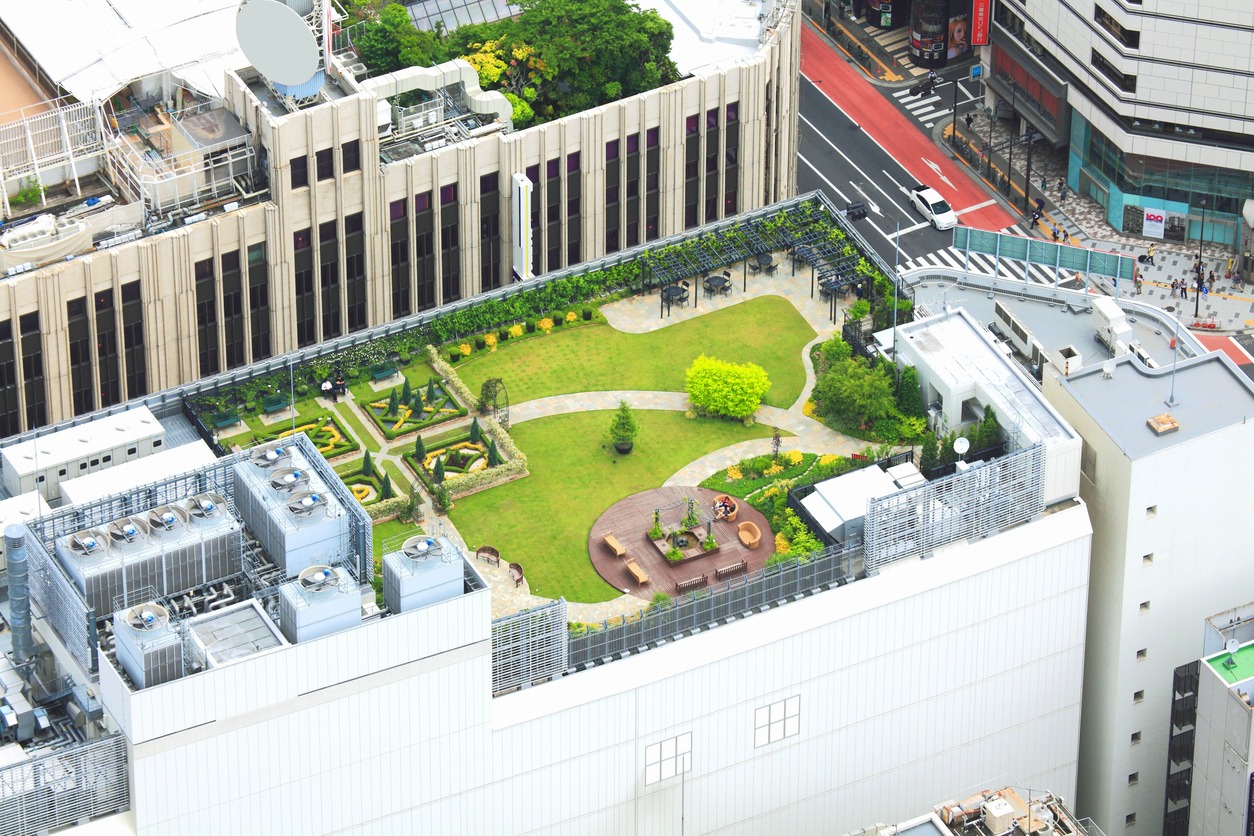Welcome to the bustling heart of urban renaissance, New York City – a metropolis famed not only for its iconic skyline but also for its vibrant energy that pulses through its streets and avenues. This city, a melting pot of cultures, cuisines, and characters, boasts a unique charm that captivates both residents and visitors alike. Amidst the towering skyscrapers and the never-ending hum of city life, there lies a hidden treasure often overlooked but integral to the city’s charm: rooftop gardens.
These gardens, nestled atop buildings, offer an unexpected escape from the city’s relentless pace. They are serene havens where the sky meets greenery, creating a striking contrast against the backdrop of steel and glass. The charm of these gardens lies in their ability to transport you from the urban chaos to a tranquil, natural oasis, offering a birds-eye view of the cityscape while surrounded by lush foliage and blooming flowers.
Brief History of Rooftop Gardens in Urban Landscapes
The concept of rooftop gardens isn’t a novel one. It dates back to ancient civilizations, like the Hanging Gardens of Babylon, one of the Seven Wonders of the Ancient World. However, the modern-day rooftop garden has evolved significantly from its historical predecessors.
In the 20th century, as urban areas became more congested, the need for green spaces became increasingly apparent. Architects and city planners sought ways to incorporate nature into the urban fabric. Rooftop gardens emerged as a solution, transforming unused spaces into vibrant areas of flora and fauna. In cities like New York, where horizontal space is a premium, these vertical gardens became a creative way to reintegrate nature into urban living.
The Growing Popularity of Rooftop Gardens in NYC
In recent years, New York City has witnessed a surge in the popularity of rooftop gardens. This trend reflects a broader shift towards sustainability and green living. As the city grapples with environmental challenges like air pollution and the heat island effect, rooftop gardens have come to be recognized not just for their beauty but also for their environmental benefits.
They have become symbols of urban innovation, turning barren rooftops into productive and recreational spaces. From small private terraces adorned with container plants to large public spaces with elaborate landscaping, these gardens vary vastly in scale and style. Some feature native plants to support local wildlife, while others are designed as communal vegetable gardens, providing fresh produce in areas with limited access to green spaces.
This growing interest in rooftop gardening is also a testament to New Yorkers’ resilience and adaptability. In a city that’s constantly evolving, these gardens represent a commitment to not only enhancing the quality of urban life but also to preserving and nurturing the environment. They are a crucial step towards a more sustainable, livable, and green New York City.
The Benefits of Rooftop Gardens
Environmental Impact
Rooftop gardens in New York City are more than just aesthetically pleasing spaces; they are pivotal in mitigating some of the environmental challenges faced by urban areas. One of the key benefits is their role in reducing the urban heat island effect. This phenomenon, where urban regions experience higher temperatures than their rural surroundings due to human activities, is significantly alleviated by rooftop gardens. The plants and soil in these gardens absorb and reflect sunlight, thereby cooling the building and the surrounding air. This not only makes the city more comfortable during hot summer months but also reduces the reliance on air conditioning, leading to lower energy consumption and greenhouse gas emissions.
Moreover, rooftop gardens play a crucial role in improving air quality. Plants naturally filter pollutants and carbon dioxide, producing oxygen in return. In a city where air quality is a constant concern, these green spaces provide a natural filter, helping to purify the air. The addition of these gardens across the city’s rooftops can contribute to a notable improvement in the overall air quality.
Social Benefits
Beyond their environmental impact, rooftop gardens offer significant social benefits. They provide communal spaces in a city where such areas are scarce. These gardens can serve as community hubs, where people come together to garden, relax, and socialize. This aspect of rooftop gardens is particularly important in a city as densely populated as New York, where opportunities for community interaction and engagement with nature are invaluable.
Rooftop gardens also have a positive impact on mental well-being. Urban living can be stressful, and having access to green spaces is known to reduce stress and improve overall mental health. These gardens offer a peaceful retreat from the hustle and bustle of city life, a place where residents can unwind and reconnect with nature.
Economic Advantages
The installation of rooftop gardens can also lead to economic benefits. Properties with rooftop gardens often see an increase in their value. These green spaces make buildings more attractive to prospective buyers and tenants who value sustainability and quality of life. Additionally, rooftop gardens can lead to energy savings. By providing insulation, they reduce the need for heating in winter and cooling in summer, leading to lower energy costs for the building.
Design Principles for Rooftop Gardens
Assessing Space and Structural Integrity
Designing a rooftop garden in New York City begins with a thorough assessment of the available space and the structural integrity of the building. Not all rooftops are suitable for a garden, and it’s crucial to determine the weight the roof can safely support. This involves consulting with structural engineers and architects. The design must consider factors such as the slope of the roof, drainage systems, and access for maintenance.
Rooftop gardens, therefore, must be designed with a keen eye on maximizing every square inch. This is achieved through various innovative strategies:
- Vertical Gardening: Utilizing vertical space is a key strategy. This involves growing plants on wall-mounted panels or trellises, which not only saves floor space but also adds an aesthetic dimension to the garden.
- Multi-Functional Furniture and Features: Designers often use furniture and garden features that serve multiple purposes. For instance, seating that doubles as storage space or raised flower beds that also act as barriers or dividers.
- Container Gardening: Using containers of various sizes allows for flexibility in the arrangement and rotation of plants. This method makes it easier to make the most of the available space and to adapt to changing conditions and needs.
- Smart Layout Planning: Effective layout planning is crucial. Designers carefully plan the placement of each element to ensure easy access for maintenance while maximizing the planting area. They often use software simulations to optimize the layout.
Choosing the Right Plants for NYC Climate
Selecting the right plants is vital for a successful rooftop garden. The plants must be able to thrive in the specific microclimate of a New York rooftop, which can be harsher and more variable than ground level. Native plants are often a good choice as they are adapted to the local climate and require less maintenance. Moreover, native plants support local biodiversity, providing habitat and food for native wildlife.
Integrating Sustainable Practices
Sustainability is a key consideration in rooftop garden design. One common practice is rainwater harvesting, where rainwater is collected and used for irrigation. This not only conserves water but also reduces the runoff that can overwhelm the city’s drainage systems during heavy rains. Another sustainable practice is the integration of solar panels. These can be used to power lighting or small water features in the garden, further reducing the environmental footprint of the building.
Iconic Rooftop Gardens in New York City
New York City is home to some of the most iconic rooftop gardens in the world. Each of these gardens not only exemplifies innovative design but also reflects the city’s diverse character.
View this post on Instagram
- The Metropolitan Museum of Art: Known as The Met, this garden is a fusion of art and horticulture, offering a tranquil space amid an impressive collection of sculptures. The Met’s rooftop provides a unique vantage point overlooking Central Park and the city skyline, making it a favorite spot for both art lovers and tourists.
- Brooklyn Grange: Spanning over 2.5 acres across multiple rooftops in the city, it’s one of the largest urban agriculture ventures in the world. Brooklyn Grange is not just a garden; it’s a sustainable and productive farming business that grows over 50,000 pounds of organically-cultivated produce per year. This project showcases how underutilized rooftops can be transformed into thriving green spaces that contribute to the local food system.
View this post on Instagram
Diversity in Design: Private Luxury Gardens vs. Community Green Spaces
The rooftop gardens in New York City exhibit a remarkable diversity in design. On one end of the spectrum are private luxury gardens, found atop high-end residential buildings and hotels. These gardens are often meticulously designed, featuring exotic plants, elegant landscaping, and sometimes even water features or art installations. They serve as private oases for residents and guests, offering exclusive retreats from the city’s frenzy.
On the other end are community green spaces, which are more than just gardens; they are vital components of the neighborhoods they serve. These spaces often include community vegetable gardens, where residents can grow their own produce, and are designed to be inclusive and accessible. They foster a sense of community and connection to nature, providing a shared space for residents to gather, learn, and collaborate.
Challenges and Solutions in Urban Rooftop Gardening
Navigating New York City’s Regulations and Permits
One of the primary challenges in establishing a rooftop garden in New York City is navigating the complex web of regulations and permits. The city has specific guidelines regarding the structural capacity of buildings, safety measures, and accessibility. Overcoming these bureaucratic hurdles requires thorough planning and often the assistance of professionals in architecture, engineering, and law. The key is early and comprehensive consultation to ensure that all city codes and regulations are met.
Overcoming Structural and Space Limitations
Structural and space limitations pose significant challenges. Most rooftops were not originally designed to accommodate gardens, so assessing and reinforcing the structural integrity is a crucial first step. Solutions often involve using lightweight materials and soil substitutes, as well as designing the garden in a way that evenly distributes weight.
Innovative Techniques for Small Spaces
In a city where space is at a premium, innovation is key. Techniques such as vertical gardening – where plants are grown on walls or in stacked layers – maximize space efficiently. Additionally, container gardening and modular planters allow for flexibility in design and can be adapted to various spaces.
The Future of Rooftop Gardening in NYC
Emerging Trends: Vertical Gardening, Smart Gardening Technologies
The future of rooftop gardening in New York City is bright and brimming with innovation. Emerging trends include vertical gardening, which not only saves space but can also transform walls into living, green art. Smart gardening technologies, such as automated irrigation systems and climate sensors, are making rooftop gardens more sustainable and easier to maintain.
The Role of Community and Government Initiatives
Community and government initiatives play a crucial role in the expansion of rooftop gardens. These initiatives can provide necessary funding, resources, and support for new projects. The involvement of local communities ensures that these gardens meet the specific needs and desires of the residents, making them more than just green spaces but integral parts of the neighborhoods.
Vision for a Greener New York City Skyline
The vision for the future is a greener, more sustainable New York City skyline. This vision includes not only more rooftop gardens but also a greater integration of these spaces into the city’s urban planning and development strategies. The aim is to create a city where green spaces are accessible to all, contributing to the environmental health of the city and the well-being of its residents. As rooftop gardens become increasingly integrated into New York’s urban fabric, they symbolize the city’s commitment to sustainability and its continuous evolution towards a greener future.
Conclusion
Rooftop gardens in New York City are more than just aesthetic additions; they represent a fusion of nature and urban development, embodying human ingenuity and resilience. These gardens are environmental champions, mitigating the urban heat island effect and purifying air, while also serving as social spaces that encourage community interaction and connection with nature. Economically, they boost property values and promote energy efficiency, demonstrating a profitable balance between ecological awareness and urban progress. The diversity of these gardens, ranging from luxurious private oases to vibrant community centers, mirrors New York City’s inclusive spirit. They’re accessible to many, reflecting the city’s adaptability and creativity in overcoming challenges like regulatory hurdles and space constraints.
The future of rooftop gardening in New York City is promising, with innovations like vertical and smart gardening technologies enhancing sustainability. Community and government initiatives are increasingly making these gardens a core element of urban planning, benefiting both the environment and residents. Rooftop gardens are transforming the city’s landscape, serving as the city’s lungs and community hearts, and symbolizing hope for a sustainable urban future. They epitomize New York’s continuous evolution, blending urban vibrancy with natural serenity. As these gardens thrive, they reinforce the city’s growth, resilience, and green spirit. Delve into the challenges and solutions in urban agriculture through the lens of NYC’s thriving rooftop gardens.




